The 1970s living room was a fascinating ecosystem of bizarre decorative elements, practical oddities, and strange little conveniences that would baffle today’s minimalist-minded youth. Long before Marie Kondo urged us to question whether objects “sparked joy,” our parents and grandparents filled their formal living spaces with a collection of items that somehow migrated into every home across America. These weren’t just random tchotchkes but cultural artifacts that defined an era of shag carpeting, wood paneling, and a peculiar aesthetic that mixed frugality, functionalism, and flair in ways that remain utterly distinctive half a century later.
1. The TV Guide Fortress

No 1970s coffee table was complete without its ever-growing fortress of TV Guide magazines, stacked with the precision of ancient stonework and never, under any circumstances, to be thrown away. These weekly television bibles arrived every Sunday, providing the only reliable navigation through the three-network universe and becoming more valuable as the week progressed and you needed to know exactly when “The Six Million Dollar Man” would air. Parents guarded these guides with surprising ferocity, often writing notes in the margins when conflicts arose between “Kojak” and “McCloud,” creating historical documents of family viewing compromises that could be referenced during future scheduling disputes. Electric Literature points to TV Guide as the most reliable source of entertainment information before the internet jostled it out of place.
What made the TV Guide collection truly strange wasn’t just its presence but its persistence, with many homes harboring months or even years of back issues that formed geological strata of entertainment history. Guests learned quickly not to disturb these carefully maintained archives, as they often served as impromptu coasters, notepads, and fan material during overheated summer evenings. The family hierarchy was never clearer than when observing who had first access to the new issue, with dad typically claiming reading rights before passing it along to mom, then older siblings, in a television information trickle-down system that left younger children frantically asking, “When’s ‘Emergency!’ on?” well into Wednesday.
2. The Macramé Owl Army
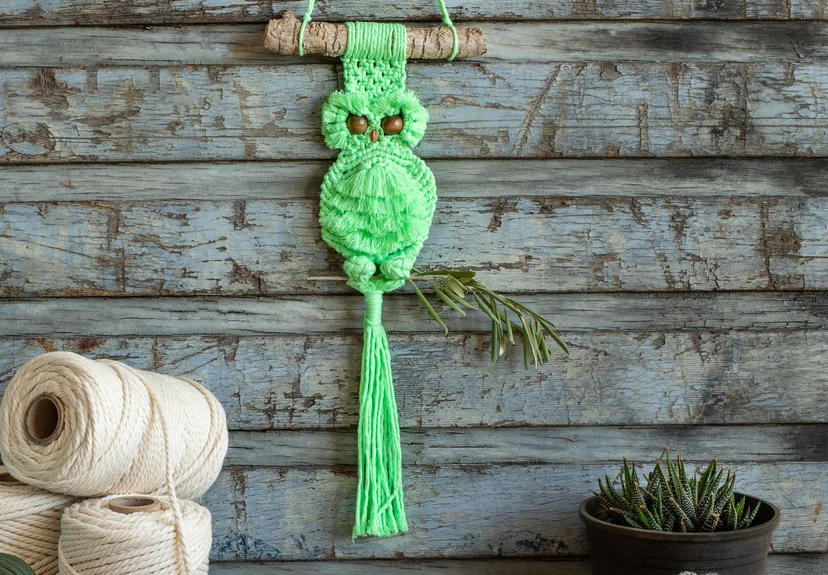
No 1970s living space was complete without at least one—and often an entire parliament—of macramé owls, their knotted bodies dangling from walls, perched on shelves, or hanging from elaborate macramé plant holders. These textile birds, typically crafted in earth-toned jute with wooden bead eyes, watched over family gatherings with an inscrutable gaze that somehow matched both Mediterranean and Colonial decor schemes. Created during craft nights, purchased at church bazaars, or received as housewarming gifts, these owls multiplied until they achieved a critical mass that interior decorators now recognize as “peak macramé”—the point at which a living room could not physically support additional knotted creations. Nostalgic fans can rejoice, as The New York Times reports that this decorative fiber feature is making a very solid comeback in homes across America.
The macramé owl’s strange appeal lay in its combination of folk art charm and vaguely unsettling presence, as their beady eyes followed guests around the room like textile security cameras. These weren’t merely decorations but status symbols indicating the homeowner’s connection to crafting circles or, in some cases, their own manual dexterity and patience for following the increasingly complex patterns featured in “Women’s Day” magazine. Surviving specimens now command surprising prices on vintage marketplaces, purchased by millennials who display them ironically without realizing they’re recreating their grandmothers’ living rooms one knotted owl at a time.
3. The Ashtray Archipelago

Even in non-smoking households, ashtrays proliferated throughout 1970s living rooms, creating miniature decorative archipelagos across end tables, coffee tables, and those strange tiered corner shelves every den seemed to have. These weren’t merely functional objects but expressions of personal style, ranging from kitschy ceramic souvenirs (“Greetings from Lake Tahoe!”) to genuine attempts at art glass, often in the same aggressively harvest-toned color palette that dominated everything from appliances to automobiles. The paradox of non-smoking families maintaining multiple immaculate ashtrays spoke to an era of hospitality when accommodating visitors’ vices took precedence over personal preferences about indoor air quality. Ashtray Planet writes that ashtrays have a history almost as ancient as the smokey practice they’re associated with.
What made the ashtray situation truly bizarre was the unofficial hierarchy that developed, with “everyday” ashtrays for regular visitors and “good” ashtrays ceremoniously produced when hosting important guests or holiday gatherings. Children quickly learned which ashtrays were simply decorative (usually the ones resembling seashells or small brass animals) and which could actually be used, creating an unwritten code of ashtray etiquette that visitors were somehow expected to intuitively understand. The most perplexing specimens were commemorative ashtrays from destinations like Disney World or national parks, sending the mixed message that one should both remember Old Faithful and extinguish cigarettes in its miniature likeness.
4. The Mysterious Glass Grapes

Perhaps no decorative element screams “1970s living room” louder than a cluster of oversized glass grapes, typically in amber, green, or that peculiar shade of purple that existed nowhere in nature. These weighty glass orbs, often as large as actual fruit, nestled in wooden bowls or hung from driftwood arrangements, catching light and collecting dust with equal efficiency. No one ever seemed to purchase these grape clusters—they simply manifested in homes across America, multiplying like tribbles until each house had at least two sets, one for the coffee table and another for that strange wall shelf unit with the small compartments.
The true mystery of the glass grapes was their complete impracticality—too heavy to serve as convincing fake fruit, too fragile to function as paperweights, and too bulky to be easily stored when you tired of them. Children were perpetually warned not to touch them lest they break and somehow cause financial ruin to the household, elevating these humble glass spheres to objects of mystical importance. Decades later, these grape clusters reappeared in thrift stores across America, having survived multiple house moves and style changes, patiently waiting for the inevitable nostalgia-fueled revival that would restore them to coffee tables nationwide.
5. The Encyclopedic Coffee Table

Long before Google provided instant answers, most 1970s living rooms featured a coffee table laden with an assortment of enormous reference books that nobody ever actually opened except during heated disagreements. The centerpiece was often a massive “coffee table book” about coffee tables—or more likely, National Geographic collections, World Book Encyclopedia yearbooks, or enormous Readers Digest compendiums bound in faux leather with gold-edged pages. These weighty tomes served multiple purposes: impressing guests with the family’s intellectual curiosity, providing emergency booster seats for small children at Thanksgiving, and settling disputes about world capitals or animal migration patterns before contentious family game nights.
What made these reference collections truly strange was their pristine condition, maintaining factory-fresh spines despite occupying prime living room real estate for decades. Carefully dusted during weekly cleaning routines and straightened before company arrived, these books achieved almost decorative object status while simultaneously representing the family’s theoretical commitment to knowledge. The unspoken understanding that consulting these volumes required a special occasion—like proving Uncle Walter wrong about which president was left-handed—elevated simple reference checking to ceremonial status, with dad solemnly retrieving the appropriate volume while family members gathered for the authoritative ruling.
6. The Decorative Rotary Dial Phone

The living room telephone of the 1970s wasn’t merely a communication device but a statement piece, often housed in faux-wood paneling, flashy gold accents, or molded into novelty shapes like Snoopy or Mickey Mouse. Unlike today’s personal mobile devices, this shared family phone occupied prime real estate in the living room, its incredibly short cord ensuring that private conversations remained an oxymoron in most households. The ritual of dialing—the satisfying circular motion and mechanical clicking as the dial returned to position—became so ingrained that many people continued to “dial” on push-button phones well into the 1990s, their muscle memory refusing to adapt to technological progress.
What made these phones particularly strange was their immobility, tethered to the wall like electronic house plants that determined where conversations could happen rather than adapting to human preference. The phone’s location often created designated “phone zones” in the living room, areas where family members would cluster during calls, speaking in their “phone voices” while others watched television at lowered volume as a courtesy. The shared nature of these devices created distinct telephone etiquette now foreign to younger generations, including the dreaded “long-distance warning” from parents (delivered in urgent whispers) and the elaborate message-taking system that turned children into human answering machines for their siblings.
7. The Mysterious Bowl of Wax Fruit
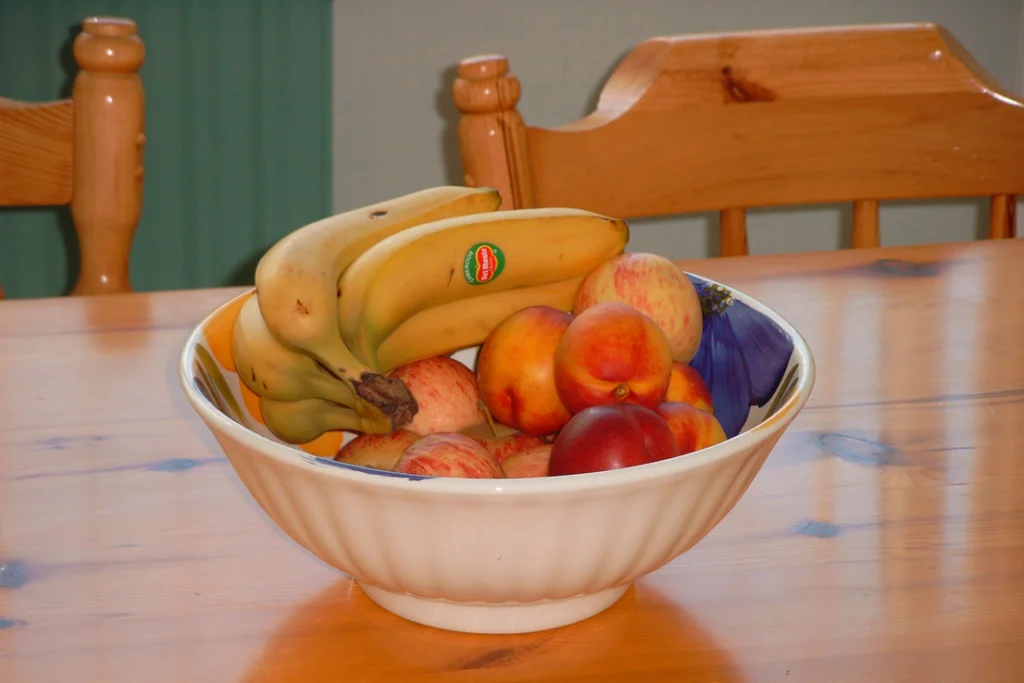
Perhaps nothing confounded first-time visitors to 1970s homes more than the bowl of perfect, dust-collecting wax fruit that occupied dining tables, coffee tables, and kitchen counters across America. These suspiciously shiny apples, grapes, and bananas—perpetually ripe yet never edible—sat in ornate bowls like still-life paintings come to three-dimensional life, tempting hungry children who quickly learned the disappointment of artificial produce. The fruit’s uncanny valley realism created moments of genuine confusion for guests who might reach for a particularly convincing pear only to be gently informed, “Oh, those are just for show,” introducing them to the concept of food as purely decorative object.
The true strangeness of wax fruit lay in its persistence despite offering neither nutrition nor particularly convincing mimicry, existing in a liminal space between food and art that reflected the decade’s broader comfort with artificial approximations. These fruit collections required regular dusting and occasional replacement when summer heat caused anatomically incorrect melting or when the cat discovered that batting fake grapes across hardwood floors provided excellent entertainment. Modern minimalists might question dedicating household resources to fake food perpetually on display, but in the context of a decade that embraced wood-grained contact paper and artificial Christmas trees with color-coded branches, perpetually fresh wax produce made perfect sense.
8. The Spider Plant Jungle
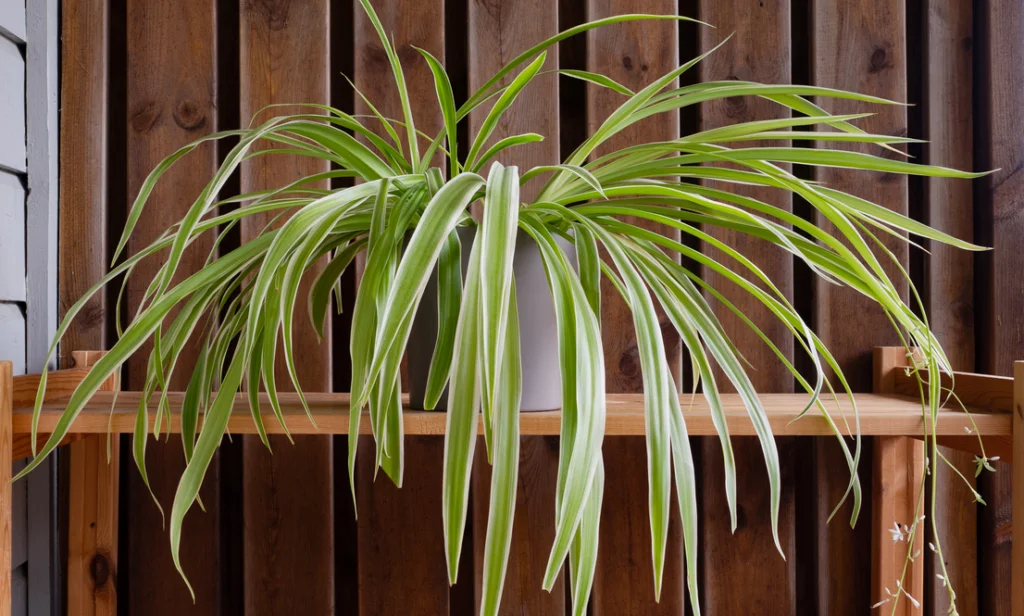
The 1970s houseplant explosion turned living rooms into miniature rainforests, with the ubiquitous spider plant serving as the flagship species of this domestic vegetation movement. Hanging from macramé plant holders, perched on plant stands, or cascading from bookshelf tops, these prolific plants with their dangling “babies” created orbital systems of greenery that required careful navigation during vacuum cleaning. The spider plant’s popularity stemmed from its near-indestructibility—surviving neglect, central heating, and the occasional curious cat—and its impressive reproductive capacity, allowing plant-proud homeowners to present visitors with potted offspring like proud grandparents distributing baby photos.
What made the spider plant situation particularly strange was the unspoken competition between neighbors and relatives to cultivate the most impressive specimens, measuring success in the number of hanging tendrils and baby plants rather than flowers or fruit. These plants became family heirlooms of sorts, with many households nurturing specimens propagated from a single mother plant purchased when the family moved into their first home. The resulting genealogy of spider plants created botanical family trees spanning generations, with adult children establishing their own households often taking a starter plant descended from their childhood home—a living connection to family history that required only occasional watering and repotting to thrive.
9. The Inexplicable Wooden Duck Collection
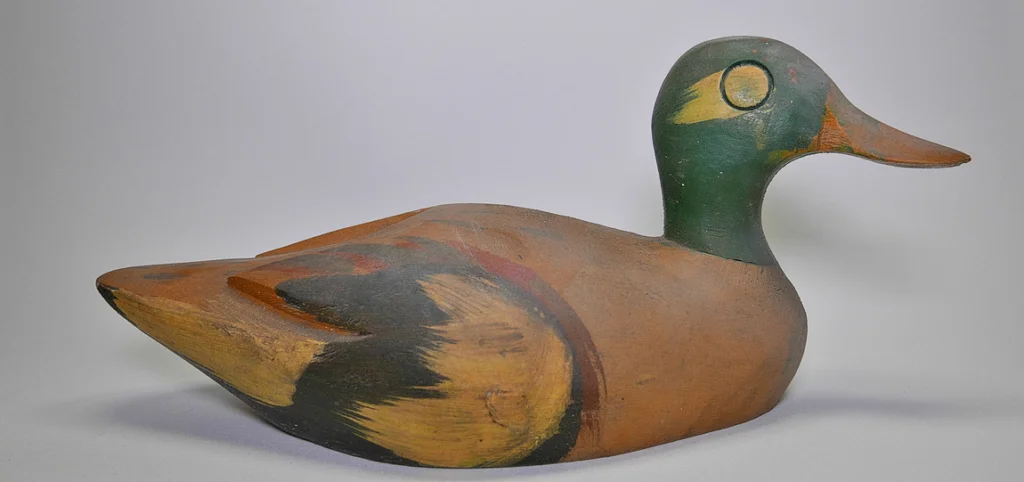
Without any clear origin story or practical purpose, wooden ducks mysteriously appeared in 1970s living rooms, multiplying until they achieved critical mass on mantels, bookshelves, and those curious floating wall shelves shaped like chunky wooden flying Vs. These carved waterfowl—ranging from minimalist silhouettes to detailed replicas with glass eyes and genuine feathers—became shorthand for “tasteful rustic decor” despite having no connection to the family’s actual outdoor activities or regional heritage. The ducks typically appeared in traditional flying formation, sized from largest to smallest as they migrated across horizontal surfaces, occasionally accompanied by smaller shorebirds or, in more eclectic households, an incongruous carved owl that had clearly infiltrated the flock.
The wooden duck phenomenon reached its apex with the introduction of the ceremonial duck head cane stand, a specialized piece of furniture dedicated solely to storing walking sticks that nobody in the household actually used. These stately waterfowl sentinels, usually carved from dark wood with brass fittings, stood in entryways and corners, clutching canes and umbrellas in their bills like avian butlers eternally awaiting the return of a Victorian gentleman. The true mystery remains how so many families independently decided that decorative ducks represented the pinnacle of living room decor, creating a nationwide waterbird explosion that eventually receded, leaving behind thrift stores still awash in carved duck detritus decades later.
10. The Formal Living Room Couch Cover

Perhaps the most baffling 1970s living room phenomenon was the plastic couch cover, a transparent protective layer that preserved the pristine condition of furniture by making it sweaty and uncomfortable to actually use. These clear vinyl shields—often textured to mimic the upholstery pattern beneath—created the distinctive sound of peeling skin from plastic that defined visits to certain relatives’ homes during summer months. The paradox of purchasing beautiful furniture specifically chosen for comfort and appearance, then immediately encasing it in moisture-trapping plastic that negated both qualities, reflected a fascinating generational approach to possession where preservation often trumped actual enjoyment or utility.
What made these covers truly strange was their selective deployment, with many homes maintaining a strict division between “everyday” furniture (allowed to weather the ravages of actual use) and “company” furniture preserved in its virgin state for hypothetical important visitors who rarely materialized. The plastic-covered formal living room often existed in a state of perpetual readiness, like a museum display of mid-century domesticity that family members were permitted to view but rarely touch. Children learned early which rooms contained “the good furniture” and developed navigation patterns through the house that avoided these preservation zones except during major holidays when the plastic might be temporarily removed—revealing pristine fabric that maintained its showroom brightness while less protected furnishings faded into comfortable shabbiness.
11. The Arcane Magazine Rack

No 1970s living room was complete without its dedicated magazine rack, a specialized piece of furniture that existed solely to organize reading material in various states of completion. These racks—typically crafted from wood, brass, or leather-like vinyl—created organized chaos for publications ranging from “Reader’s Digest” to “Popular Mechanics,” with special accommodations for oversized issues of “Life” or “Look” magazines. Unlike today’s digital consumption where reading material disappears with a click, these physical periodicals accumulated mass and gravity, eventually requiring sophisticated organizational systems that reflected family reading hierarchies and preservation priorities.
The truly strange aspect of magazine racks was their tendency to preserve publications long past any reasonable timeliness or relevance, creating time capsules of dental office reading material within private homes. Magazines discussing Nixon-era political scandals might sit alongside publications celebrating the new 1976 automobile models, creating a physical timeline of the decade’s interests, concerns, and fashion disasters. Children learned to mine these deposits for school projects, discovering forgotten treasure troves of information about world events, scientific discoveries, or celebrity marriages that had cycled from breaking news to historical curiosity without ever leaving the rack by the recliner.
12. The Ceremonial Candy Dish
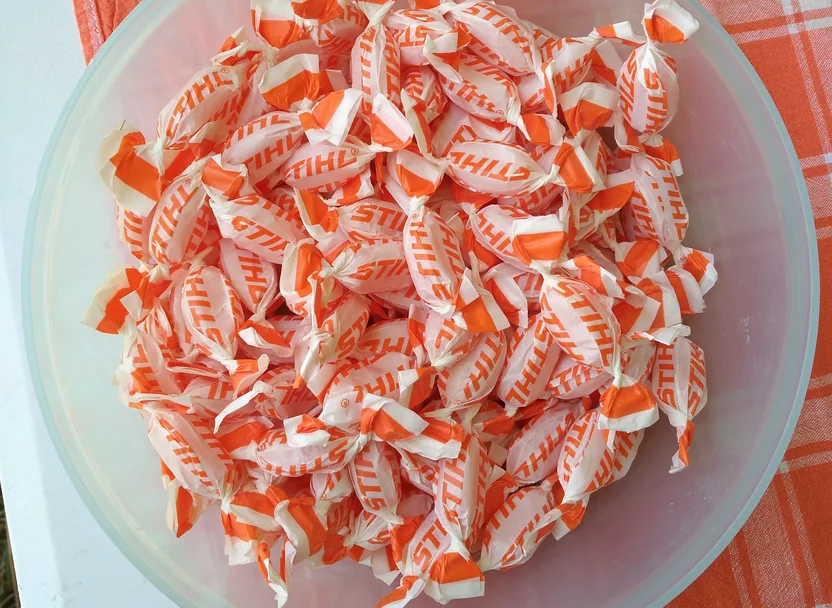
The formal candy dish occupied a special place in 1970s living room culture—a vessel containing treats that everyone could see but nobody was actually permitted to eat. These decorative containers—often cut crystal, milk glass, or ceramic with lids resembling small animals—housed candies specifically selected for longevity rather than flavor, with hard butterscotch discs and those mysterious strawberry-wrapped hard candies being particularly popular choices. The truly perplexing aspect of these dishes was how infrequently their contents were refreshed, with many homes maintaining the same collection of increasingly fossilized confections for months or even years, the candies fusing into a single archaeological formation that could theoretically survive nuclear winter.
What made the candy dish situation particularly strange was the unspoken rule that these visible treats were reserved exclusively for hypothetical guests or special occasions that rarely materialized, creating generation-spanning standoffs between candy-seeking children and treat-guarding adults. The mysterious economics of candy dish maintenance remained obscure to children, who couldn’t understand why freely consuming these sweets would somehow bankrupt the household or violate some sacred hospitality code. The ultimate candy dish power move involved packaging—with individually wrapped candies representing casual everyday offerings while unwrapped specimens conveyed a formality suggesting they should be admired rather than consumed, creating a confectionery caste system understood instinctively by adults but baffling to sugar-seeking youth.
13. The Haunted Music Box Collection
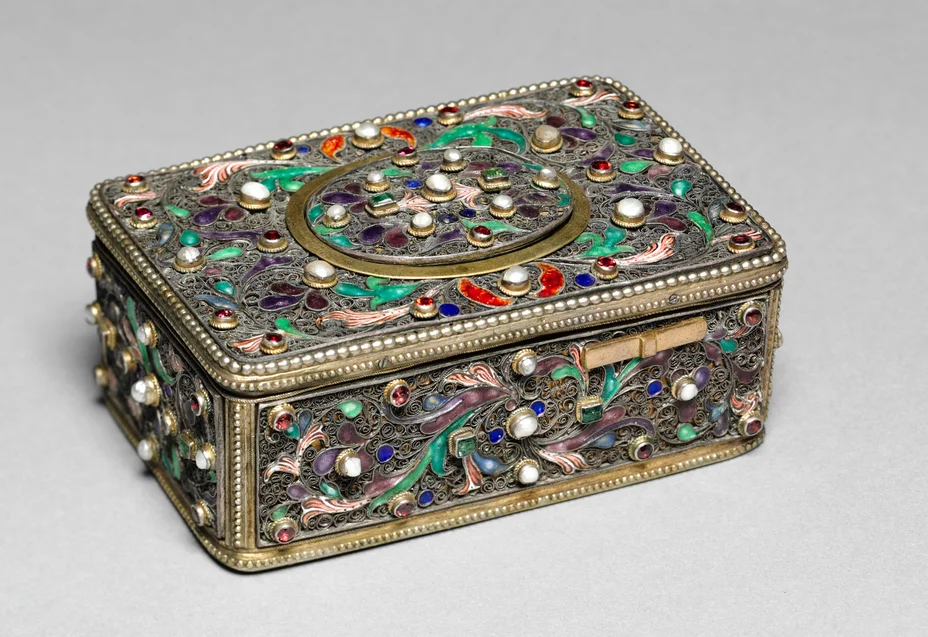
Many 1970s living rooms featured at least one—and often several—decorative music boxes that simultaneously served as dust-gathering knickknacks and mechanical marvels capable of startling visitors with unexpected tinkling melodies. These musical mechanisms, housed in materials ranging from carved wood to porcelain figurines to bizarre sculptural formats like pianos played by ceramic kittens, occupied prime display real estate on mantels, shelves, and those strange teardrop-shaped wall niches that inexplicably appeared in many tract homes. The collection typically grew through gift-giving occasions, with music boxes representing the perfect present for the person who apparently needed “just one more thing to dust” in their already crowded living space.
The truly strange aspect of music box collections was how rarely they were actually played intentionally, instead coming to life at unexpected moments when bumped or vibrated by passing footsteps or slamming doors. These random musical interludes created momentary household panic as family members tried to identify which of the dozens of mechanical music makers had spontaneously activated, often triggering a chain reaction of adults moving through the living room carefully lifting and lowering various decorative objects trying to match melodies to sources. The resulting soundscape—a discordant overlay of partial renditions of “Für Elise,” “Greensleeves,” and “The Entertainer”—created a distinctive household soundtrack that could unexpectedly transport grown children back to their parents’ living rooms decades later when hearing similar mechanical melodies in antique stores or grandparents’ homes.
Looking back at these strange living room staples evokes both nostalgia and bewilderment—a reminder of how quickly our definition of “normal household items” evolves across decades. These objects weren’t just random collectibles but reflections of a particular cultural moment when formal living rooms still served as household stages, visual consumption demonstrated status, and preservation often trumped practical use. While contemporary design favors minimalism and functionality, there’s something undeniably charming about these peculiar little artifacts that defined domestic life for a generation, creating shared experience across households nationwide through their ubiquitous oddity, and if we’re honest, many of us wouldn’t mind finding a set of glass grapes or a macramé owl at a thrift store to bring a touch of that ’70s magic back home.


